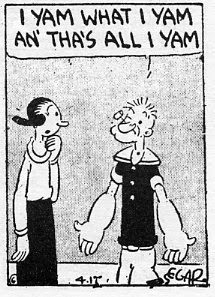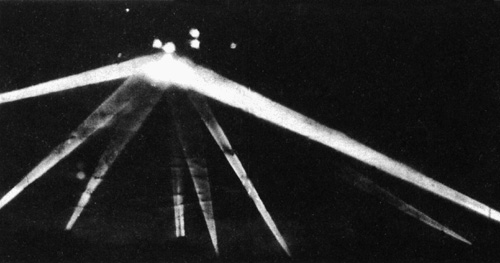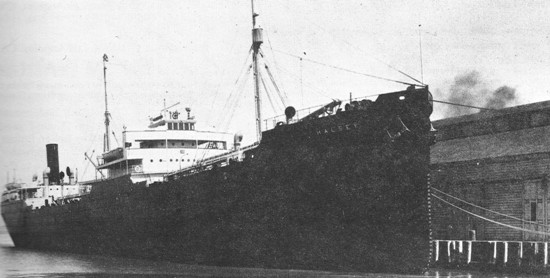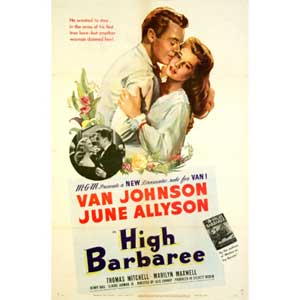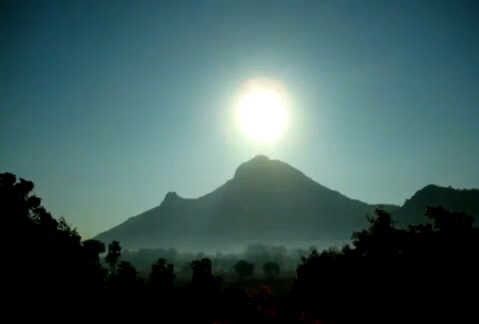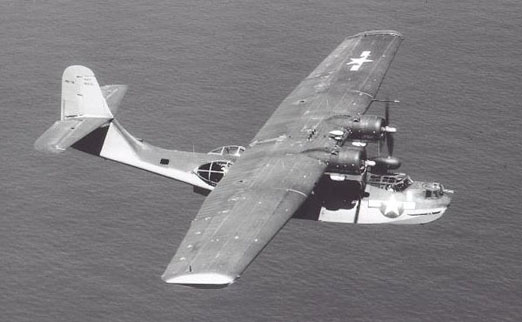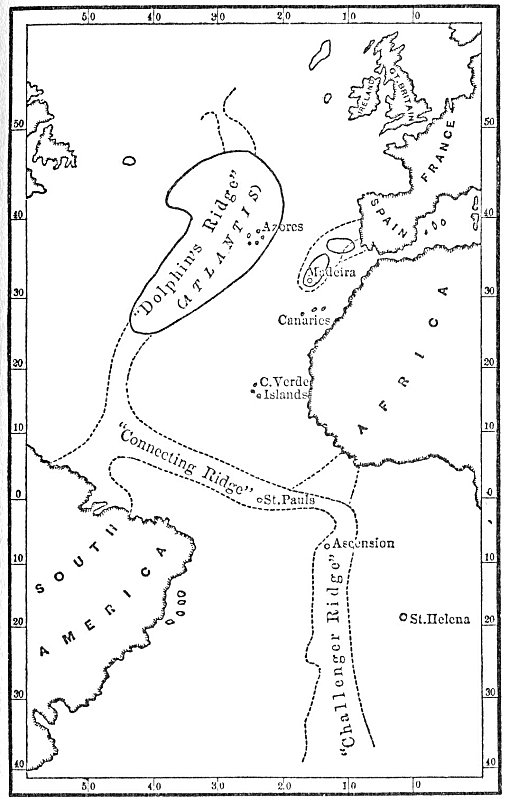CARLOS CASTANEDA
|
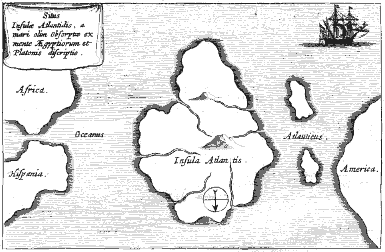 |
Before Don Juan
When I first met Carlos Castandea I was a newly employed teenager just a few short months out of high school. Castaneda, while admittedly higher ranking in the overall scheme of things and some ten years older than me, was not yet the cipher of an undergraduate student lost among the hundreds enrolled in the anthropology department at UCLA of his early years. Nor was he close to the later controversial figure he was destined to become. Matter of fact, as far as his academic career was concerned, he was really not much more than a vacuous-faced student enrollee at Los Angeles City College struggling along with everybody else to hammer out the 60 units of general education requirements needed for an AA degree. It was still about a year so before he would transfer to UCLA and many more after that before he would meet the nearly white-haired Yaqui Indian shaman sorcerer he called Don Juan Matus at the Greyhound bus station in Nogales, Arizona --- the powerful shaman sorcerer that eventually became the focus of Castaneda's dozen or so books and that made Castaneda rich and both of them famous.
Before our meeting little did either of us know we were on a collision course. I had gone to work for a seemingly innocuous little aerospace firm with a huge reputation about six or seven miles north along the coast from the little southern California beach community where I lived. The company was located in what was then not much more than a small oil refinery owned industrial town called El Segundo right next to Los Angeles International Airport. I had been hired as a trainee technical illustrator for an even smaller offshoot of the company that helped design and build the high altitude breathing equipment for the then super-secret U-2 spy plane --- which basically meant I got paid for my drawing ability.(see)
After I had been there a respectable length of time and got to know a few people I began hanging out with a small, sort of loose-knit but quasi-exclusive group of people that fancied themselves artists much as I did of myself. Nearly every Friday after work we would meet in some small out of the way place like the Iconoclast Coffee House on Wall Street in Redondo Beach or the Insomniac on Pier Avenue in Hermosa Beach, and depending where we were, order some wine, beer or coffee and talk art, philosophy and politics late into the night just like artists and beat poets did, we thought, in the West Bank sidewalk cafes of Paris.
A couple of miles from my job was the Mattel Toy Company. Some of the people in the group knew some people at Mattel who also fancied themselves as artists and some of them joined us as well. One of the people that used to show up at those get togethers was Carlos Castaneda, who just happened to be working at Mattel at the time. Now, most people, especially those who know little or nothing about Castaneda's pre-Don Juan background, find themselves at a total loss as to why Castaneda would even bother to show up at our small, unprestigious, under-the-radar, and unheralded group of so-called artists. Over and over it comes up: Why would a person in their right mind, of such stature as Castaneda, entertain the possibility of participating in such a group of nobodies? The answer is quite simple. First, as mentioned in the opening paragraphs at the top of the page, at the time of the meetings Carlos Castaneda was NOT the Carlos Castaneda he came to be AFTER he met the mysterious and powerful Yaqui Indian shaman-sorcerer he came to call Don Juan Matus. Secondly and most importantly, in those pre-Don Juan days, Castaneda likened himself as an artist --- and truth be told, our group was openly receptive to artists that had not made it simply because none of us had. As for Castaneda being an artist, it is weaved throughout his early personal history and background. According to his own words, on Monday, July 24, 1961 in a conversation with Don Juan and published in Castaneda's third book Journey to Ixtlan (1972), Don Juan admonishes him for never assuming responsibility for his acts and Castaneda writes:
He (Don Juan) dared me to name an issue, an item in my life that had engaged all my thoughts. I said art. I had always wanted to be an artist and for years I had tried my hand at that. I still had the painful memory of my failure.
Castaneda was a Peruvian. Most people I knew at the time with a Hispanic background were of Mexican descent. For me, to be a person from Peru was kind of odd and the fact that he was piqued my interest. The most of what I knew of Peru circled around the hidden city of Machu Picchu that I had learned from a very good friend of mine who had been there.
Four of five years before those artist meetings, because of an impending divorce between my dad and Stepmother, he sent me and my younger brother to live with our grandmother on our mother's side in a small suburban beach town southwest of Los Angeles, California. The summer had just ended and I was just about to enter high school for the first time while my younger brother was starting the seventh grade.
Like many kids in those days we had a number of what my grandmother used to call chores that we were expected to do around the house. One of those chores was cutting the front lawn. My dad, after visiting one weekend and watching me struggling to cut the grass with an extremely ancient and dull push-type hand mower, went to Sears and bought a power mower for me to use. The first thing my brother and I did after our dad left was build a small cart and haul the mower around the neighborhood cutting lawns for money.
Around the corner and up the street was a house built on a lot that was on a small hill that was at least five feet above sidewalk level. Because the house had a perpetually unkempt lawn that always seemed in need of mowing I thought it was a perfect place to earn a few bucks. However, the other kids in the neighborhood told me a scary old mummified man that sat staring out the window all day long and hated kids lived there and they warned me if I was smart I would never get any closer to the place than the sidewalk.[1]
One day in the need of some cold hard cash to go to the movies or indulge in some other equally important pastime, and, after having gone to almost every house on the block trying to drum up some lawn cutting business with no success, I forced myself to climb the stairs to the porch of the mummified man and knock. A lady barely looked out from behind the door and told me she was just the housekeeper and worked there only a couple of days a week. About cutting the lawn I would need to talk to the owner, but he couldn't come to the door, I would have to come in if I wanted to to talk to him. She took me to a room that was just to the right of the entry way that looked out over the street and sure enough, sitting in a chair looking out the window was the mummified man.
As it turned out the mummified man wasn't mummified at all. Actually he was hooked up to some sort of breathing apparatus attached to an oxygen tank, plus, on-and-off throughout the day he had IVs stuck into his arms and wires attached in various places for monitoring equipment to record his heart rate, blood pressure and other vitals. So said, for the most part, because he was so hooked up to machines and couldn't move he basically just sat there all day long and either read books and newspapers or looked out the window.[2]
The man himself, although seemingly tall, was stocky for his height, slightly heavyset, raspy voice with a short, almost military style haircut. His skin was dry and wrinkly as though he had been badly burned in many places, and he had. He was a onetime merchant marine. During World War II the merchant ship he was serving on was queuing up for a convoy and positioned amongst the other ships in the rear corner on the starboard side that he called "coffin corner," said by experienced hands to be the most easy picking location for submarines in a convoy. Everybody on board was nervous, not because of the position, but because previously another crew member, an able-bodied seaman by the name of Olguin (possibly Holguin) had always been with them. Word had it that any time Olguin was part of the crew and the ship was in coffin corner, because of his karma or good luck or whatever they would not be attacked. The legend was alive because not one of the several voyages he had been on and traveling in coffin corner had his ship been hit or even come under attack. On this trip Olguin was either not in the convoy or assigned to another ship. Even before the convoy really got underway a wolfpack started picking at the edges and my friend's ship torpedoed. In order to save himself he had no choice but to jump overboard, landing in an area with oil burning along the surface of the water, the fire scorching his skin as he plunged through and returned for air. He spent months in recovery and rehabilitation. A few years after he was released he moved into the place he was in now. He said in all the years he had lived there I was the first kid in the neighborhood to actually come up on the porch and to the door, let alone come in. He wasn't too concerned about the grass one way or the other, but he could use, he said, a reliable errand boy a couple of days a week to go the post office, pick up and deliver packages, go to the drug store and library and do minor shopping for such things as vegetables and freshly ground coffee. Hence started what turned out to be a very interesting friendship between me, a ninth-grade freshman just into high school and the older, heavily scared, barely able to move ex-merchant marine.
Every wall in the room that he sat in day after day, except for the wall with the picture window, was completely covered with bookshelves, stacked shelf after shelf, row after row, from floor to celing, each shelf stuffed with book after book. Along the floor beneath the window were boxes filled with even more books and on the wall space next to the window was what I would call the only picture in the room, an old movie poster simply thumbtacked to the wall. On the wall space next to the window on the other side was what looked like a few framed certificates or dipolmas and a couple of plaques.
He told me he had been all over the world. He had seen the pyramids in Egypt, the Olmec, Mayan and Aztec ruins in Mexico and Central America. Easter Island all by itself in the Pacific and Angkor Wat in jungles of Cambodia. He had been to Machu Picchu high in the Andes of Peru by climbing the Inca Trail and explored Stonehenge on the Salisbury Plain in England. Machu Picchu and Peru always seemed to be in the forefront of his thoughts, speaking fondly of both quite often. One reason is because he knew Hiram Bingham, the explorer that discovered Machu Picchu. He claimed they were more than just passing acquaintances, but actually friends. During WWII Bingham gave lectures on the south sea islands to members of the Navy. My merchant marine friend had traveled extensively throughout the South Pacific, including, as mentioned, Easter Island. Somehow the two met along the way and Bingham used him as a source for some of his lecture materials. My friend even had a signed first edition copy --- with a rather lengthy handwritten personal acknowledgement --- of Bingham's book, LOST CITY OF THE INCAS: The Story of Machu Picchu and Its Builders (1948), that Bingham sent him a few years into my friend's recuperation period. Bingham even wrote in the acknowledgement that he hoped the merchant marine would have "a quick and full recovery."
Every day I came by we would talk about some place he had been to, Peru or otherwise. Our discussions on any one place could run over a period of weeks or sometimes just last the few hours I was there. Sometimes we would pick up where we left off and other times we would go off on some tangent discussing someplace else right in the middle of what we were talking about and not come back to the first topic for weeks.
Each time we talked he would have me get down several books related to the place and we would look at pictures and go over the differences and the similarities of what different authors had written compared to what he had seen and experienced. He had lots and lots of books on Atlantis by Edgar Cayce, Ignatius Donnelly, and L. Sprague de Camp as well as a complete set of the Lost Continent of Mu books by James Churchwood. He told me when he was around my age he had become driven, actually obsessed with Atlantis and Mu. He began traveling the world to find or substantiate both places. But, the more and more ancient places he visited and more and more educated he became the more and more he became convinced neither place ever existed. In his quest, both pro and con, besides all the Atlantis and Mu books in his library, he had collected reams and reams of books, material, research and explanations that debunked nearly every single aspect of either continent or their civilizations that anybody could ever pose, except possibly one.
Replicating almost down to the letter the classic Egyptian "tale" --- with strong Atlantean overtones --- transcribed on papyrus by Ameni-amenaa dating from the XII Dynasty, circa 1991-1805 BCE, The Shipwrecked Sailor, he was found weeks, possibly months after his ship had been torpedoed somewhere in the Atlantic strapped with heavy ropes to a piece of debris floating all alone in the middle of the ocean, and except for being unconscious and heavily scared from the burn marks, which had seemingly healed, he was in pretty good shape. Everybody said it was a miracle, that his burns must had healed by the salt water. How he had made it in the open ocean without food or water nobody knew. Most people speculated he had been picked up by a U-boat and ejected at a convenient time so he would be found, although no record has ever shown up to substantiate such an event, nor did he recall ever being on a submarine, German or otherwise.[3]
The day he told me the story about being found he showed me a delicate gold necklace that had what looked like a small Chinese character dangling from it. He said one day in the hospital while being given a sponge bath he was looking in a hand mirror at his burn marks when he noticed he had the necklace around his neck. He never had a gold necklace in his life. When he asked the nurse where it came from she said as far as she knew he came in with it as it was found amongst the few personal effects he had with him. She said typically they would not put any jewelry on a patient but some of the staff thought that since he was so scarred by the burns that he might like a little beauty in his life so someone put it around his neck. He told me he had no clue where it came from or how it came into his possession, but for sure he didn't have it on before he was torpedoed. He said everybody always admired it and it appeared to be very ancient. [4]
I told the story about the necklace in an abreviated sort of way to the artists one Friday, interjecting a strong emphasis on Machu Picchu because it was located in Peru and Castaneda was in the group that night. The mention of Machu Picchu perked up his ears it seemed, so I continued with the only other Peru "story" I was able expound on at any length. I had learned the story from a book given to me by a friend of my Mentor, the person I did study-practiced under. Although my mentor told me he had studied under a maharshi in India he never specifically gave me his name. His friend told me he had studied under the venerated Indian holy man the Bhagavan Sri Ramana Maharshi. To fill me in on Sri Ramana she had given me several books on him, one of which had the following story:
A couple from Peru was visiting the ashrama of Sri Ramana Maharshi one day and he was enquiring about their day-to-day life, and their talk turned to Peru. The couple began picturing the landscape of their homeland and were describing the sea-coast and the beach of their own town. Just then Maharshi remarked: "Is not the beach of your town paved with marble slabs, and are not coconut palms planted in between? Are there not marble benches in rows facing the sea there and did you not often sit on the fifth of those with your wife?" The remarks of Sri Maharshi created astonishment in the couple. How could Sri Bhagavan, who had never been out of Tiruvannamalai since a boy, know so intimately such minute details about their own place? Sri Maharshi only smiled and said:
"It does not matter how I can tell. Enough if you know that abiding IN the SELF there is no Space-Time."
(source)
NOTE: A second equally interesting incident, cast in in a similar vein, and involving the Maharshi but a little too long to go into here, can be found by going to: THE MEETING: An Untold Story of Sri Ramana.
Castaneda was totally fascinated by the story of Sri Ramana and the Peruvian couple, especially the space-time part, and wanted to know both the name of the author and the name of the book the story came from. I told him I couldn't recall at the moment, but at the next get together I would bring the information. The next time I saw him I gave him a note with all the info on it he requested. He thanked me and except for a brief interlude a year or so later when I saw him from the distance across the seating area at the Nogales Greyhound Bus Station on the exact same day and time he alludes to of having met Don Juan Matus for the very first time it was edging close to the last of times I would be seeing him under similar circumstances.
On another night when Castaneda and I were both there at the same time under those similar circumstances I just happened to be wearing, for no particular reason, my Mystic Aztec Sun God ring, a ring that went through fire and ritual in the eyes of a Curandero to became "real." Castaneda noticed the ring and asked if the bright red gemstone was a ruby. Castaneda was born in Peru and spent his growing up childhood there. So said, he most likely had zero knowledge of anything related to Captain Midnight Radio Premiums, so in seeing the ring he drew or saw no analogy between my ring and a 1940's give away toy offer. As I took the ring off and handed it to him I told him I had taken the ring to have it appraised and was told the gemstone was an Aztec sacred stone called a Mexican fire opal, the purest most flaw-free unblemished example the appraiser had ever seen. As a matter of fact, no sooner had Castaneda examined the ring, after what I would call nothing less falling into a minutes-long trance after somehow being locked into gazing into the Aztec's legendary fire opal and me having to shake him out of it, than he, although he didn't and it wasn't for sale, offered to buy it.
TIME TRAVEL, THE CURANDERO, AND MEETING QUATU-ZACA
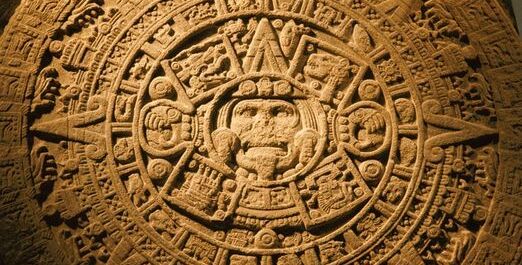
(please click image)
The interesting part of it all is those artist get togethers happened over a period of time before Castaneda, to my knowledge, ever thought of Don Juan Matus.
I say so because IF Castaneda was working on the development of the Don Juan character at any time before he purportedly met him at the bus station in Nogales he never said anything about it. I would think our artist discussions after work would have been the perfect forum to bring him up --- yet he didn't. Why? Castaneda just didn't seem to know about such things. If Don Juan Matus was a total made up work of fiction it seems to me, since the timing was perfect, some rudimentary form of Don Juan would have come up in our discussions --- and it was a perfect place to do so as nobody in the group leaned toward the literary side of things so there was no chance any idea Castaneda may have had or presented would have been appropriated or stolen. Even if Castaneda carried a staunch predilection toward holding his cards close to his vest during those early years of our discussions, you would think by now at least, some sort of rough drafts of primitive Don Juans' and his beliefs would have surfaced if he was indeed working on any pre-Don Juan ideas. Additionally, although Castaneda's ex-wife Margaret Runyan, now deceased (1921-2011) confirmed that her husband made frequent field trips to Mexico in the time he was supposedly apprenticed to Don Juan --- and while she has publicly dumped on him pretty hard in many areas, she has NEVER reported that Castaneda was working on the Don Juan idea or talking Don Juan philosophy before the Nogales meeting. To my knowledge nobody has come forward to state equivocally that Castaneda was expounding a proto Don Juan philosophy anytime before he supposedly met the Shaman.
However, at those meetings, besides the necklace story and the Machu Picchu story, on a minimum of at least two occasions, I know I told a story about my uncle taking me when I was a young boy to a very special cave deep in the desert --- a story that ended up, after thirty years passed, so remarkably close if not verbatim, to one Castaneda told in one of his books. Where Castaneda's cave was I don't recall. My cave, if it was in Arizona, New Mexico, or Mexico itself I'm not sure primarily because like most of the excursions I went on with my uncle they were seldom to one place during one trip and time and travel was almost always convoluted. I do know we had met a strange old man who went with us part of the way and that we had gone to the cave for a special time. That special time was either the summer solstice or fall equinox.
After traveling over some pretty rough non-road roads we got to the point we could go no further by truck so we simply left the old man and the vehicle behind and continued into the mountains on foot --- all so we could be at the cave to see the sunset. My uncle told me the cave was one of three caves, all carved out and man-made, positioned along the ridgeline in such a way so that when the sun went down on special days it would would set directly on the very tip of the tallest mountain miles across the valley.
We ourselves were miles and miles from any road or habitat that I knew of and because it was too dark to travel we had to stay the night at the cave. In the middle of the night, seemingly out of nowhere, we were confronted by an emaciated man. My uncle and the man got into a heated argument and the next thing I knew the man was gone, like he had disappeard into thin air.
I am certain Castaneda was in attendance for at least one, possibly both of the times I told the story. The only reason I bring it up is because in Castaneda's eighth book Power of Silence (1988) in the section entitled THE MANIFESTATIONS OF THE SPIRIT: The First Abstract Core he describes, at least up to the appearance of the emaciated man, an almost exact scenario --- carved out cave and all --- that transpired between himself and Don Juan.
So, what am I saying, that Castaneda copied my story? Could be. Or it could be, unrelated to anything I said, that he himself was taken to one of the seasonal caves by Don Juan Matus or the old man or both. So too, although such an occurrence seems to be highly remote, he could have, after hearing the story and getting wrapped up in the various events as they unfolded, searched until he found one of the caves or someone who could take him there.[5]
In closing, it should be noted, unconnected with me or any of the above, Castaneda did meet up with my uncle sometime prior to that bus station meeting while traveling in the desert southwest on his infamous Road Trip with the former Pothunter turned anthropologist colleague Bill during the late spring, early summer of 1960. In Zen, The Buddha, and Shamanism I bring up the relationship between my Uncle and Carlos Castaneda as follows:
In later years, because of that association and my uncle's knowledge of Sacred Datura and peyote as well as other halluciogens, he was interviewed by Carlos Castaneda, apparently on a Road Trip in the process of gathering information for future use in his series of Don Juan books. In 1960 or so Castaneda was an anthropology student at UCLA collecting information and specimens of medicinal type plants used by the Indians in the desert southwest when the two crossed paths. My uncle had field searched thousands and thousands of plants, herbs, and mushrooms, even to having had several previously undiscovered species named after him.
AND NOW THIS:
ABOUT THE WANDERLING AS THE AUTHOR OF THIS SITE:
Over and over people ask why is it that they should accept what I have written about Castaneda as having any amount of credibility?
For one thing I personally knew, met and interacted with Castaneda many times --- however, it was done so long before Castaneda became Castaneda. Matter of fact he was still a nobody student trying hard to obtain an AA degree from Los Angeles City College, working at Mattel Toy Company, and when I knew him, considered himself mostly as an aspiring artist rather than anything that remotely resembled an author or shaman. Secondly, and unrelated to he and I knowing each other, my uncle was the Informant that is so widely mentioned in Castaneda's works both by him and others, that introduced him to the rites and rituals of the use of the plant Sacred Datura that sent him into his initial experiences of altered states. Third, in an attempt on my part to confirm, clear up, or have them discount any number of things that have shown up or said about Castaneda and his life, things that have taken on a life of their own as fact because they have been repeated over and over so often, I interviewed, talked to, or conversed with a number of individuals that were prominent in his life --- especially so in areas that raise conflict when people read one thing about him and I write another.
Originally when I first started writing about Castaneda it was for one reason only. It had to do with help substantiating an incident in my life that revolved around what are known in Buddhism and Hindu spiritual circles under the ancient Sanskrit word Siddhis. Siddhis are supernormal perceptual states that once fully ingrained at a deep spiritual level can be utilized by a practitioner to initiate or inhibit incidents that are beyond the realm of typical everyday manifestation.
In that the incident that occurred in my life, although bordering on the edges of what is generally conceived in the west as Shamanism or possibly the occult, was actually deeply immersed on the eastern spiritual side of things. To bridge the understanding between the eastern and western concepts I brought in for those who may have been so interested the legacy of one of the most well read practitioner of such crafts in the western world, Carlos Castaneda. Although highly controversial and most certainly not the fully unmitigated expert in the field, he is widely read and a known figure when mentioned, by camps both pro and con. So said, Castaneda has the highest profile in of all individuals to have claimed the ability through shamanistic rituals the ability to fly --- thus, for reasons as they related to me I used Castaneda in my works as an example. In doing so it opened a virtual Pandora's Box of never ending controversy, causing me to either ignore or substantiate what I presented. Hence, as questions were raised by me in my own writing or raised by those who read my material more pages were created to explain who, what, when, where, and why.

(click image)
The following people were all major movers in the life of Carlos Castaneda, and at one time or the other I met and talked with them all, which is more than most people who write about Castaneda has ever done. And I only did so on and off over time primarily to clarify questions about Castaneda that I had read that just did not make sense. Most people who question what I have presented about Castaneda simply gather their information from the standard already in existence party line. Some of the people I've talked to in reference to Castaneda who, following some rather extended discussions, clarified a lot for me --- after Castaneda himself of course, others are people like C. Scott Littleton, Alex Apostolides, Barbara G. Myerhoff, Edward H. Spicer, Clement Meighan, who Castaneda dedicated his first book to, and Castaneda's ex-wife Margaret Runyan.
Interestingly enough, my interview with Runyan came about because before she married Castaneda, she had been engaged to another author, the cowboy and western writer, with over 100 books to his credit, Louis L'amour. It just so happened my uncle who, if you recall, was the Informant in Castaneda lore, just happened to know L'Amour. My uncle took me with him one day he went to see L'Amour. When I had a chance to meet Runyan years later I used me knowing L'Amour as the wedge to talk with her. As it was, and not many people know about it, my uncle, who was influential with Castaneda also, along with another man deeply seeped in Native American spiritual lore by the name of H. Jackson Clark, worked together funneling Native American spiritual facts to L'Amour used as a theme in two of his books that borderlined much of what Castaneda wrote about, titled The Californios and Haunted Mesa.
MARGARET RUNYAN CASTANEDA
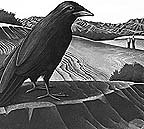 |
THE BEST OF CARLOS CASTANEDA |
| <<< PREV ---- LIST ---- NEXT >>> | |
PEACE CORPS ZEN
THE WANDERLING
